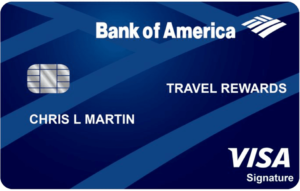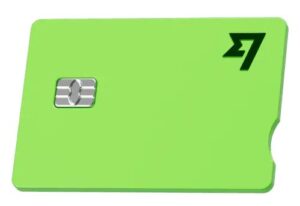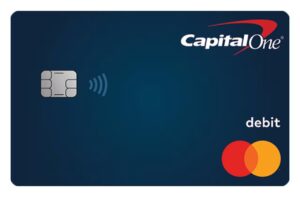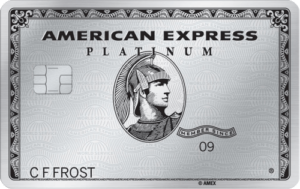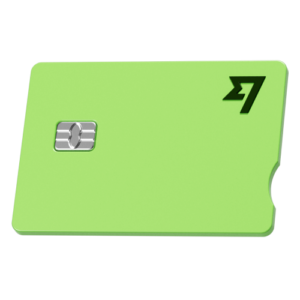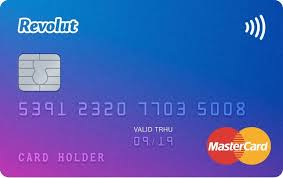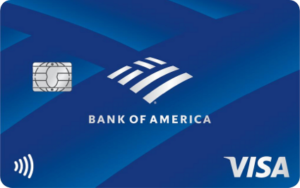Bank of America Foreign Transaction Fees [2026]
If you have a Bank of America checking account with a debit card, or if you’ve got a BoA credit card, you might be wondering what Bank of America overseas fees apply when you use your card abroad.
This guide walks through all you need to know about BoA foreign transaction fees for different card types. Read on for more on the BoA fees, rates and limits you’ll need to know. And as a bonus we’ll also cover some Bank of America alternatives, like Wise and Revolut, to help you decide on the perfect debit or credit card for your next trip.
Quick summary: Bank of America foreign transaction fees
- Bank of America credit and debit cards are globally accepted but may incur extra fees for international use
- Fees for international transactions with Bank of America cards vary based on the card type and account tier
- Some Bank of America credit cards have no foreign transaction fees but may have annual fees
- Alternatives like Wise, Revolut, American Express, and Capital One offer options with no foreign transaction fees and various benefits.
- Consider international travel cards like Wise or Revolut to avoid foreign transaction fees and use the mid-market exchange rate when traveling.
| FAQs | Answers |
|---|---|
| Does Bank of America charge a foreign transaction fee? | Bank of America typically charges a 3% foreign transaction fee on most purchases made outside the U.S. |
| Do Bank of America debit cards work internationally? | Bank of America debit cards are issued on the Visa and Mastercard networks, meaning that they are accepted globally. |
| How do I avoid BofA international transaction fees? | Use BofA cards without foreign transaction fees or explore alternatives like Wise or Revolut for convenient fee-free spending. Learn more about alternatives here. |
| Which BofA cards have no foreign transaction fee? | Bank of America cards that have no foreign transaction fee include Travel Rewards, Premium Rewards and Alaska Airlines Visa cards. We’ll cover other no foreign transaction fee cards in more detail in a bit. |
Does Bank of America work internationally?
So, how does Bank of America work for international travel?
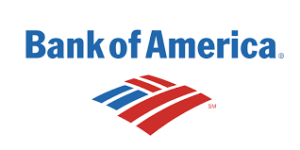
The good news is that BoA credit and debit cards are primarily issued on the Visa and Mastercard networks, which are accepted globally and can be used more or less anywhere in the world. That said, you may pay extra fees when you use your Bank of America card overseas, depending on the specific card type you hold. We’ll cover which BoA debit and credit cards have foreign transaction fees in more detail, next.
How does Bank of America compare on international fees?
Let’s start with a summary of Bank of America foreign card fees compared against a couple of alternative providers – Wise and Revolut, and Capital One as another major US card issuer. We’ll dive into more detail about all of these different BoA international fees, in a moment.
| Provider/Service | Exchange rate | Foreign transaction fee | International ATM fee | Other costs |
|---|---|---|---|---|
| Bank of America
| Bank of America, or card network exchange rate | Varies between cards – 3% for most debit and credit cards Fees are waived for some premium checking account tiers Some credit cards don’t have foreign transaction fees | 5 USD debit card fee Preferred Rewards Diamond and Diamond Honors tier checking accounts have the international ATM fee reimbursed With credit cards, there’s typically a 3% cash advance fee | Cards may have annual fees Credit cards have interest, late payment fees and penalties if you don’t repay in full |
| Wise | Mid-market exchange rate | No foreign transaction fee – currency exchange fees from 0.33% | First 2 withdrawals up to a combined total of $100/month for no fee*. After that, $1.50 + 2% (once you’ve withdrawn $100 in a given month, any amount in excess will be charged a 2% fee)* | 9 USD card order fee |
| Revolut
| Revolut exchange rate | 0.5% fair usage fee once plan limit is exhausted 1% out of hours fee may apply | No-fee withdrawals to plan limit, 2% after that | Monthly fees may apply to your account, depending on the tier you select |
| Capital One
| Network exchange rate | No foreign transaction fee for credit cards or 360 products Other debit cards may have international fees to pay | Debit cards with international fees: 2 USD + 3% of the amount withdrawn Typically a 3 USD or 3% cash advance fee (whichever is higher) | Debit cards may be linked to accounts with monthly fees Credit cards have interest, late payment fees and penalties if you don’t repay in full |
Information correct at writing 4th September 2024. *ATM operators may charge their own fees. Fee amount varies by ATM operator.
As you can see, Bank of America’s foreign transaction fees and international charges can vary quite a lot depending on the account you hold:
- For BofA debit cards, there’s usually a foreign transaction fee and an international ATM fee to pay when you make withdrawals – the only exception is for Diamond and Diamond Honors tier account holders, who must have a balance of 1 million USD or 10 million USD respectively.
- Some BofA credit cards don’t have a foreign transaction fee, but in this case you may have to pay an annual charge for the card. That makes it well with comparing BoA against a few alternatives to see which provider and card might let you get the most from your money when you’re overseas.
Does Bank of America charge foreign transaction fees?
If you have a Bank of America checking account you’ll usually pay a 3% foreign transaction fee when you spend overseas. Bank of America credit cards have varied terms – including some cards which have been optimized for travel spending and which don’t have any foreign transaction fees to pay. However, in this case there may be an annual charge for the card, plus any extra fees like interest still apply.
Here’s a roundup of the key international and ongoing costs for 3 popular Bank of America cards:
| Bank of America Card | Foreign transaction fees and exchange rates | Maintenance fees and interest | Other features |
|---|---|---|---|
| Bank of America Travel Rewards | No foreign transaction fee Exchange rate set by the card network | 19.24% to 29.24% interest based on credit score No annual fee | 1.5 reward points per dollar on all eligible spending |
| Bank of America Customized Cash Rewards | 3% foreign transaction fee Exchange rate set by the card network | 19.24% to 29.24% No annual fee | Up to 3% cash back on spending, based on spend categories |
| Bank of America Advantage Plus Checking | 3% foreign transaction fee Exchange rate set by the card network | 12 USD monthly fee or 0 USD if you have least one $250+ deposit or maintain a minimum daily balance of $1,500 | No rewards, no interest |
*Information correct at writing 4th September 2024
Where Bank of America charges a foreign transaction fee it’s usually set at 3% on every dollar you spend. That doesn’t sound like a huge amount, but it can quickly build up, particularly if you’re on a longer trip, or if you’re making a high value purchase in a foreign currency.
As an alternative, and a way to avoid this foreign transaction fee, you might consider getting a multi-currency account from a digital provider like Wise or Revolut. Add dollars to your account, and then convert easily to the currency you need within the account, using the mid-market rate. You can then spend in any currency you hold with your linked debit card fee-free, whenever you’re overseas, or spending online with a retailer based abroad.
Bank of America card alternatives
Different Bank of America credit and debit cards have their own overseas fees – and while some present pretty good value for foreign currency spending, the foreign transaction fees on some credit cards and standard checking accounts can push up overall costs. Compare Bank of America cards with a few alternatives before you travel, to make sure you get the best card for your particular needs.
Here are a few Bank of America card alternatives to consider:
| Wise | Revolut | AmEx | Capital One | |
|---|---|---|---|---|
| Card types | Debit | Debit | Debit and credit
| Debit and credit
|
| Card order fee | 9 USD | No fee | No fee | No fee |
| Monthly/annual fee | None | Monthly fees may apply depending on account tier | Varied by card type | Annual fees may apply depending on the card you select |
| Currencies supported | 40+ currencies for holding and exchange in Wise Account Spend in 150+ countries with Wise Multi-Currency Card | 25+ currencies for holding and exchange in Revolut account Spend in 150+ currencies with Revolut card | USD or Euros only for bill calculation Spend globally wherever network is accepted | USD only for bill calculation Spend globally wherever network is accepted |
| Foreign transaction fee | None | None | Varied by card type – some cards have no foreign transaction fees, others have fees of around 2.5% – 3% | No foreign transaction fee for credit cards or 360 products Other debit cards may have international fees to pay |
| ATM fee | First 2 withdrawals up to a combined total of $100/month for no fee*. After that: $1.50 + 2% (once you’ve withdrawn $100 in a given month, any amount in excess will be charged a 2% fee) | No-fee withdrawals to plan limit, 2% after that | Typically a 10 USD or 5% cash advance fee (whichever is higher) | Debit cards with international fees: 2 USD + 3% of the amount withdrawn Typically a 3 USD or 3% cash advance fee (whichever is higher) |
| Exchange rate | Mid market rate, currency exchange fees from 0.33% | Revolut exchange rate to plan limit, 0.5% fair usage fee after that | Network rate | Network rate |
*Information correct at writing 4th September 2024
Bank of America has a pretty comprehensive range of credit and debit card products, but they’re not all necessarily designed to minimize the costs of overseas spending.
Some cards have different features – like higher rates of reward earning or cash back – but come with a 3% fee on all foreign currency spending. It’s important to check your own card’s terms and conditions before you travel, to make sure you don’t get caught out by surprise costs. Or, you might decide to pick an alternative card from a different provider instead, to cut the costs of overseas travel.
We’ll look at these Bank of America alternatives one by one in a bit more detail next.
Wise Multi-Currency Card
💡 Great for: Holding 40+ currencies, with mid-market exchange rates and a linked card for spending in 150+ countries
- Foreign transaction fees: Free to spend any currency you hold enough balance in, currency exchange fees from 0.33% when there is conversion involved.
- Exchange rates: Mid-market currency exchange rates
- International ATM fees: First 2 withdrawals up to a combined total of $100/month for no fee*. After that: $1.50 + 2% fee per withdrawal.
Open a multi-currency Wise account online or in the Wise app, to hold over 40 currencies and exchange between them with the mid-market exchange rate.
You can also order a linked Wise Multi-Currency Card to spend and make cash withdrawals in over 160 countries. Extra handy features include some convenient cash withdrawals every month, fast and secure transfers to more than 160 countries, and easy ways to get paid from 30+ countries using your own local account details in 10 currencies with your Wise account.
Is it safe to use internationally? Yes – Wise is a large, well regulated and trusted specialist provider
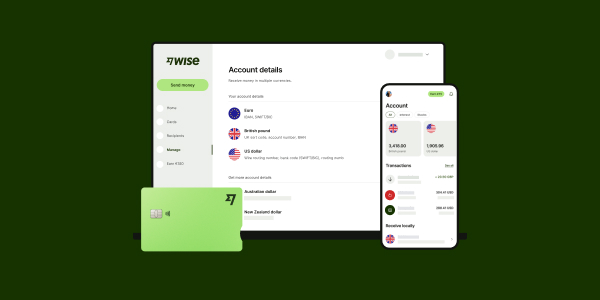
Click here to learn more: Wise Multi-Currency Card review
Revolut debit card
💡 Great for: Different account plan tiers, with 25+ supported currencies and some fee free currency exchange every month
- Foreign transaction fees: No-fee applied to spend any currency you hold, fees from 0.5%
- Exchange rates: Revolut exchange rate
- International ATM fees: Standard plans incur a fee of up to 2% of the value of withdrawal for all Out-of-Network ATM withdrawals.
Revolut standard accounts can be opened without any opening fees or monthly fee, and come with some fee free transactions and currency exchange. Once you hit your plan limits you’ll pay fair usage fees – or you could choose to trade up to a higher tier account which has monthly fees to pay, but also comes with higher no-fee transaction allowances, as well as extra features and benefits.
Is it safe to use internationally? Yes. Revolut is licensed and regulated around the world, and delivers services safely
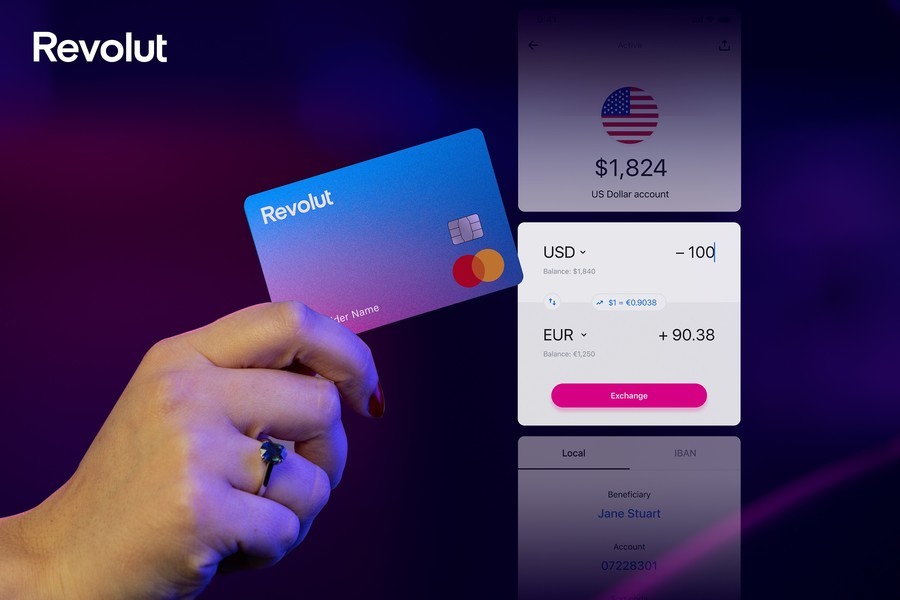
Click here to learn more: Revolut card review
American Express credit cards
💡 Great for: Broad selection of card options including no foreign transaction fee credit cards, and cards to earn rewards and cash back
- International transaction fees: Varies by card type – some cards have no foreign transaction fees while others have fees of around 2.5% – 3%
- Exchange rates: Network rate
- International ATM fees: 10 USD or 5% cash advance fee (whichever is higher)
American Express offers a good selection of credit cards both under its own name, and in partnership with banks and organizations. Similar to Bank of America, AmEx does offer some credit cards optimized for travel with no foreign transaction fee to pay.
However, not all cards have this benefit so you’ll need to shop around to find the one which best balances the costs, convenience and reward opportunities for you. Variable interest rates apply based on your creditworthiness.
Is it safe to use internationally? Yes. AmEx is a reputable and popular service, although the network isn’t as popular in some regions as others, so it’s worth checking your destination ahead of time.
Learn more: American Express foreign transaction fees
Capital One credit cards
💡 Great for: No foreign transaction fee credit cards as well as some checking account options with few international fees
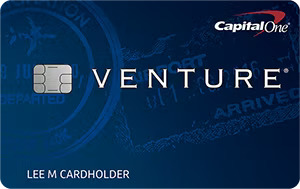
- International transaction fees: No foreign transaction fee for credit cards or 360 account checking and saving products.
- Exchange rates: Network rate
- International ATM fees: Typically a 3 USD or 3% cash advance fee (whichever is higher)
Capital One is a good Bank of America alternative if you’re looking for an account with a major bank, particularly as there’s no foreign transaction fee for credit cards or 360 account checking and saving products.
Some international fees do apply on other checking accounts, and if you’re using a credit card overseas there’s also a cash advance fee you’ll need to know about before you make any ATM withdrawals.
Is it safe to use internationally? Yes. Capital One is fully licensed and regulated, and safe to use.
Learn more: Capital One foreign transaction fees
Bank of America cards that have no transaction fees
Some travel optimized Bank of America credit cards, particularly those issued in partnership with travel companies, have no foreign transaction fees. Premium tier checking accounts may also benefit from waivers of the standard foreign transaction fees applied to checking accounts. Here’s a summary of the BoA no-foreign-transaction-fee cards you may want to look out, and quick note on some other fees you’ll need to watch out for:
| Bank of America card with no foreign transaction fee | Other fees that might be applied |
|---|---|
Debit cards:
Credit cards:
| For debit cards and checking accounts:
For credit cards:
|
Bank of America international ATM fees
Bank of America has varied ATM fees overseas, depending on the card type. Some fee free ATMs are available internationally for debit card withdrawals, through partner banks.
Here’s a comparison of the cards featured above, and the fees you’ll pay when using an ATM:
| Bank of America card type | Bank of America international ATM fee | Foreign transaction fee | ATM operator fee |
|---|---|---|---|
| Bank of America Travel Rewards (credit) | 5% cash advance fee (whichever is higher) 29.24% APR for cash advances | No fee | Varies by country and operator |
| Bank of America Customized Cash Rewards (credit) | 5% cash advance fee (whichever is higher) 29.24% APR for cash advances | 3% | Varies by country and operator |
| Bank of America Advantage Plus Checking (debit) | 5 USD | 3% | Varies by country and operator |
Here’s a quick reminder of the alternative providers we looked at earlier, compared to the Bank of America ATM fees:
- Wise Multi-Currency Card: First 2 withdrawals up to a combined total of $100/month for no fee, then 1.5 USD + 2%
- Revolut debit card: Fee-free withdrawals to plan limit, 2% after that
- AmEx (credit cards): 10 USD or 5% cash advance fee (whichever is higher)
- Capital One (credit cards): Usually a 3% cash advance fee
Bank of America exchange rates
When you spend with a Bank of America card, your foreign currency payment is converted back to dollars using either the bank’s own exchange rate or the exchange rate set by your card network – usually Visa or Mastercard.
Card network exchange rates may not be exactly the same as the rate you see on a currency converter tool, as they can include a small markup. That’s an extra fee which is added to the exchange rate, and which makes it harder to figure out what your travel spending will ultimately cost you in dollars.
Some providers, like Wise and Revolut, split out the costs of currency exchange to be more transparent and make it easier to see exactly what you’re spending every time.
Bank of America card foreign transaction limits
Bank of America credit cards have variable credit limits based on eligibility factors including your credit score.
If you have a Bank of America saving account, it’s useful to know that you’ll usually be limited to making 6 withdrawals per month before extra fees apply. Finally, if you’ve got a Bank of America checking account you may find other transaction limits apply, including on the amount you can withdraw from an ATM. You can view and change these limits by logging into the BoA mobile banking system.
Can I use my Bank of America debit card internationally?
All Bank of America debit cards are issued on the Visa and Mastercard networks, meaning that they are accepted globally. That means that you can use your Bank of America debit card internationally to make in-store and online purchases as well as ATM withdrawals.
However, it’s important to note that Bank of America typically charges a 3% foreign transaction fee on purchases made in foreign currencies, and additional fees may apply when withdrawing cash from international ATMs.
If you want to avoid these fees, you might want to consider alternatives like Wise or Revolut, which offer multi-currency accounts with low-cost options for spending abroad.
Can I use my Bank of America credit card internationally?
While you can use your Bank of America credit card to make purchases when traveling, some Bank of America credit cards will charge a 3% foreign transaction fee on purchases made in a foreign currency.
You can avoid these fees by using Bank of America credit cards which have no foreign transaction fees instead, like the Travel Rewards or Premium Rewards credit cards. You could also explore options from specialists like Wise or Revolut, which offer debit cards with no foreign transaction fees alongside competitive exchange rates for international spending.
Do you have to notify Bank of America when you travel?
You do not need to inform Bank of America of your travel in advance. However, do make sure the bank holds your correct contact details in case they need to get in touch while you’re away.
How to avoid foreign transaction fees when traveling
Ready to jet off on vacation? Here are a few final tips to make life easier, and keep down the costs of international spending:
- Get a travel optimized credit card if you’re intending to spend on credit while you’re away
- Take the time to read your card’s terms and conditions, to confirm the fees for overseas spending and withdrawals
- Always pay in the local currency wherever you are to avoid dynamic currency conversion
- Consider a multi-currency account and no foreign transaction fee card from a provider like Wise or Revolut, to use when getting cash and spending supported currencies overseas.
- Clear your credit card bills as soon as you can to cut interest costs
- Best cards without foreign transaction fees
- Chase foreign transaction fees
- Discover foreign transaction fees
- Wells Fargo foreign transaction fees
Conclusion: Bank of America foreign transaction fees
Bank of America offers a broad selection of different credit and debit cards, including some credit cards which have no foreign transaction fees. However, most checking account holders will pay a 3% foreign transaction fee, plus extra charges for making an ATM withdrawal out of network. That can mean you spend more than you need to when you’re overseas.
Compare Bank of America cards against alternative options like Wise and Revolut. With a multi- currency account you can add funds conveniently in dollars before switching to the currency you need for spending, often with lower fees compared to your bank. You’ll then be able to spend freely with no foreign transaction fee to worry about, whenever you’re abroad.
FAQs on Bank of America international fees
Is Bank of America international?
Yes. You can spend with a Bank of America credit or debit card more or less anywhere in the world – just look out for the logo of your card network.
How do I avoid foreign transaction fees from Bank of America?
Bank of America has some credit cards intended for travelers, with no foreign transaction fees. However, most checking accounts have a 3% fee to pay when you’re abroad. Consider instead an account from an alternative like Wise or Revolut, which lets you hold, exchange, send and spend dozens of currencies conveniently.
Can I use my Bank of America card internationally?
Yes. Bank of America cards can be used internationally, with no need to tell Bank of America about your travel plans in advance. Just look out for the logo of the network your card is issued on – Visa or Mastercard for example – to start spending.
Does Bank of America have foreign transaction fees?
There are no foreign transaction fees for some Bank of America credit cards. However, foreign transaction fees of 3% do apply on most checking and saving accounts from Bank of America, and on some credit cards, too so look at the terms of your account carefully before you spend.
Can I use my Bank of America card internationally without fees?
Some Bank of America credit cards don’t have foreign transaction fees – but most debit cards will have a 3% fee to pay for foreign currency spending. Even if your Bank of America credit card has no foreign transaction fee, other costs like interest and cash advance fees may still apply. To avoid these costs you might want to consider a multi-currency account and debit card from a provider like Wise or Revolut.
